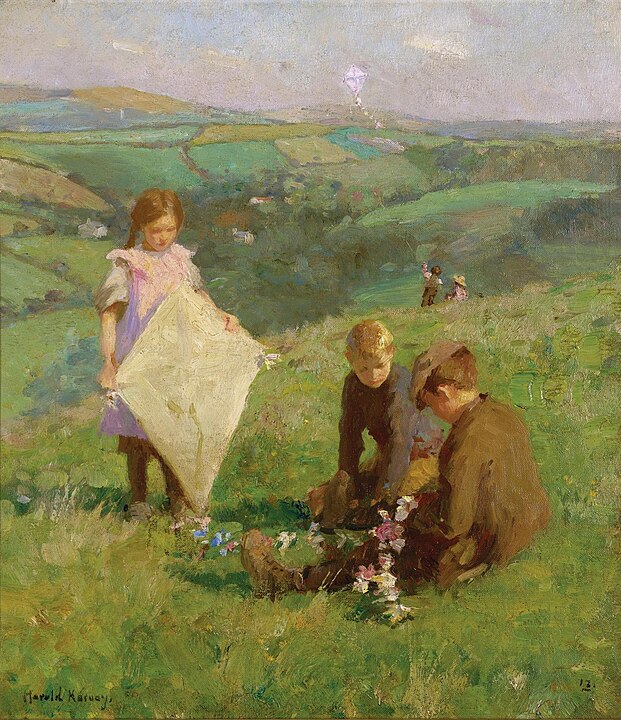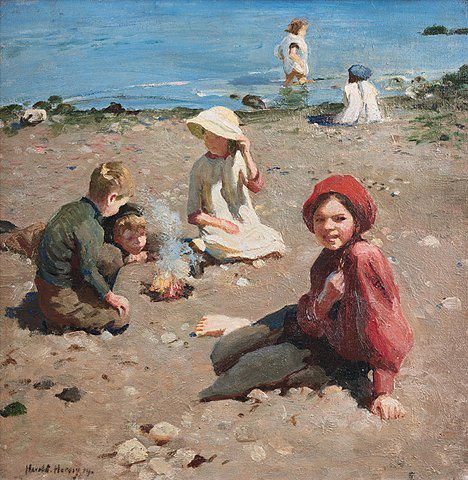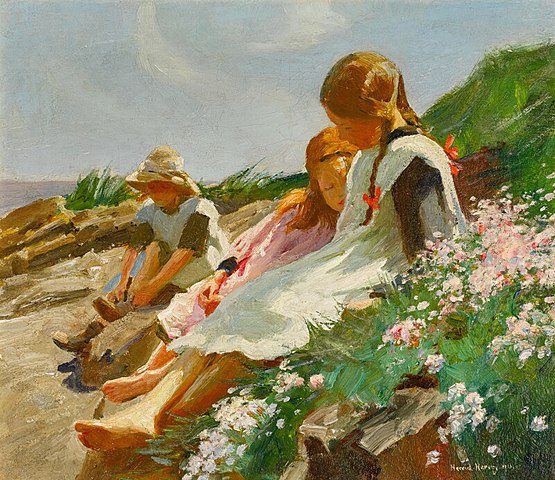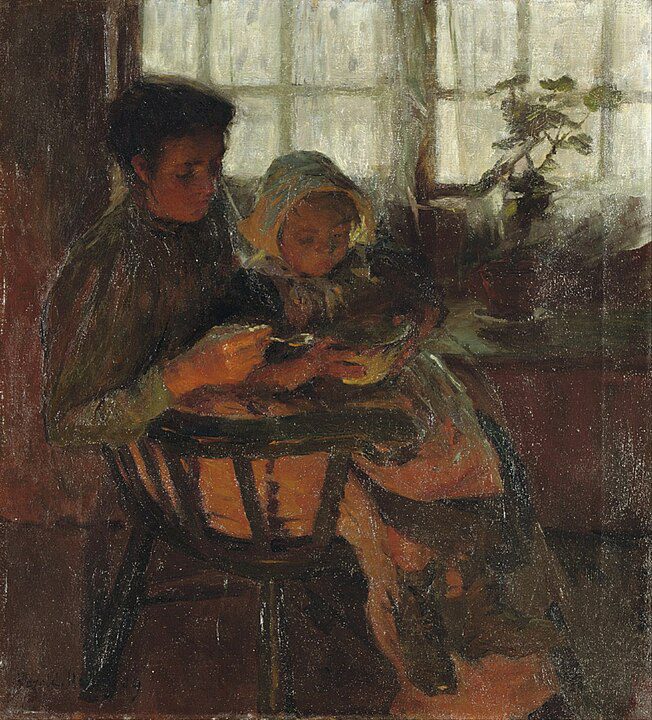
Harold Harvey (1874–1941) was a distinguished British painter whose work captures the essence of Cornish life, landscape, and light with a unique blend of realism and impressionism. Born in Penzance, Cornwall, Harvey was deeply rooted in the region, drawing inspiration from its distinctive landscapes, coastal scenes, and the daily lives of its people. His connection to Cornwall was not just geographical; it permeated his entire body of work, making him a central figure in the early 20th-century Cornish art scene.
A Penzance beginning
Harvey’s artistic journey began at the Penzance School of Art, after which he furthered his studies at the prestigious Académie Julian in Paris. This period in Paris exposed him to the works of French Impressionists and Post-Impressionists, whose influence is evident in his use of light and color. However, Harvey’s style remained uniquely his own, characterized by a subtle blend of impressionistic techniques with a more traditional, detailed approach to painting.

Returning to Cornwall, Harvey became part of the Newlyn School, a group of artists known for their realistic and often socially aware depictions of local life. Within this milieu, Harvey’s work stood out for its intimate portrayals of Cornish people and their environments. He painted with empathy and insight, capturing moments of everyday life with a clarity and vibrancy that brought his subjects to life. His paintings often featured local landscapes, scenes of social gatherings, and domestic life, all rendered with a meticulous attention to detail and a rich palette that reflected the changing moods of the Cornish countryside.
Diverse subjects
Harvey’s work is notable for its diversity in subject matter, including portraits, landscapes, and genre scenes that collectively offer a comprehensive portrayal of early 20th-century Cornwall. His ability to depict the nuances of light and atmosphere in his landscapes and seascapes is particularly remarkable, showcasing his skill in capturing the unique luminosity of the Cornish light.

Throughout his career, Harvey exhibited widely, both nationally and internationally, earning recognition and accolades for his contributions to British art. His paintings were featured in major galleries and exhibitions, including the Royal Academy of Arts in London, where his work was celebrated for its technical skill and emotive power.
Cornwall in his blood
Despite his success, Harvey remained deeply connected to Cornwall, where he continued to live and work for the majority of his life. His dedication to portraying the region and its inhabitants created a lasting legacy, making him an integral part of Cornwall’s artistic heritage. Harvey’s paintings are not only valuable for their artistic merit but also as historical documents that capture the spirit and culture of Cornwall during a period of significant change.
Harvey’s influence extends beyond his contributions to the Newlyn School and Cornish art. His work is recognized for its role in the broader context of British impressionism and realism, bridging the gap between these two movements with a distinctive style that was both personal and universally appealing. His paintings continue to be admired for their beauty, technical proficiency, and emotional depth, ensuring Harold Harvey’s place as a significant figure in the history of British art.

In conclusion, Harold Harvey’s art offers a window into the heart of Cornwall and its people, reflecting a deep love and understanding of his native land. His work captures the essence of a place and time, rendered with a sensitivity and skill that continue to resonate with audiences today. Harvey’s legacy as a painter lies in his ability to convey the beauty of the mundane, the dignity of everyday life, and the enduring spirit of Cornwall, making his work a cherished part of British art history.




